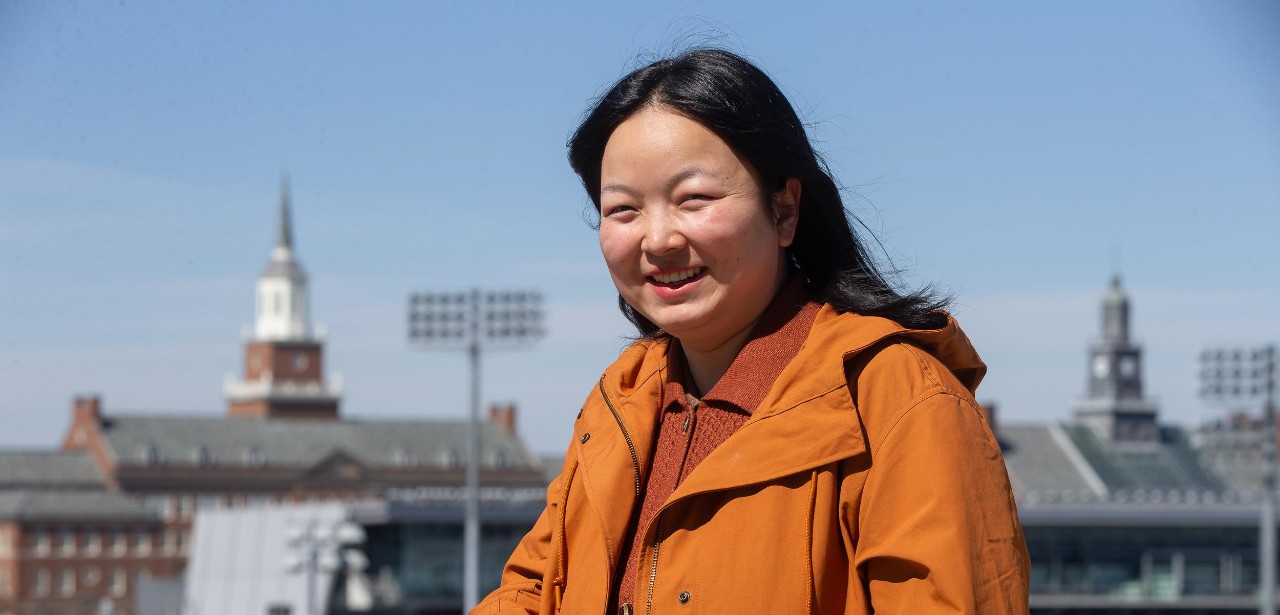
Focus turns to flood prevention in face of climate change
UC geography study finds detention basins often work best
Planners have come up with many innovative ways to prevent flooding caused by heavy downpours — from planting rain gardens to installing green roofs.
But in many cases, nothing works quite as well as a simple hole in the ground — a detention basin.
That’s the finding of an analysis by University of Cincinnati geography students in a research collaboration with the Hamilton County Conservation District.
Lead author and UC College of Arts and Sciences doctoral student Man Qi said cities are developing new ways to trap rainwater and direct it where it’s most wanted, especially during droughts. They call these low-impact development practices, which include innovations such as permeable pavement that allows rainwater to seep into the ground instead of diverting it elsewhere.

The Civic Garden Center of Greater Cincinnati features a green roof that helps collect rainwater. Photo/Andrew Higley/UC Marketing + Brand
Another innovation is a bioretention cell composed of ornamental or landscaping plants atop soil specially designed to drain quickly spread over a thick bed of gravel that does likewise. This soaks up large volumes of rain without creating standing pools of open water.
New commercial or housing developments typically must prevent rainwater from spilling out to other neighboring properties or roads. Hard surfaces like buildings and parking lots can’t absorb heavy rains so planners must collect or divert the water to prevent property damage.
“A detention pond is a common practice,” Qi said. “It temporarily stores the water and releases it into the air or the groundwater or nearby streams at a low rate to reduce the risk of flooding. It also provides some ecological benefits.”
Qi worked with the Hamilton County conservation district to measure the effectiveness of flood-prevention techniques such as detention basins and bioretention cells under five scenarios.

UC's Lindner College of Business features a green roof that collects rainwater on UC's uptown campus. Photo/Andrew Higley/UC Marketing + Brand
Qi presented their results at the annual American Association of Geographers’ conference in Denver.
“In residential areas where the impervious area is less than 40%, low-impact development practices are better. But if 70% or more of the ground surface is impervious, it’s best to put in detention basins,” Qi said. “The flood risk can be greatly reduced.”
Climate change is expected to increase both the frequency and severity of rainstorms, which means making deliberate plans for drainage will become even more important in cities, said Professor Lin Liu, a study co-author and co-director of UC’s Joint Center of GIS and Spatial Analysis.
My sister's family was badly affected by the flooding. It was very scary.
Man Qi, UC doctoral student
With their hard reflective surfaces, cities tend to trap heat, raising the ambient temperature by as much as 7 degrees during the day. This urban heat island effect can provide more energy for damaging storms, Liu said.
“Global warming and urban sprawl have contributed to extreme weather,” he said. “Coupled with the urban heat island effect many metropolitan cities have experienced more extreme precipitation events. As a result, urban flooding has become an increasing threat to the loss of human life and property damage in many cities around the globe.”
“You can see the extreme rainfalls happen more frequently,” Qi added. “Intense, heavy rains could inundate networks designed to prevent flooding and the capacity of drainage networks could fail because they simply can’t hold that much stormwater.”
The issue of urban flooding became real for Qi in 2021 when her sister’s home was inundated by floodwaters in China’s Zhengzhou City. More than 10 million people were affected by the disaster, which was one of the most severe floods in the city’s history. As much rain fell in a single day as the city sometimes sees in an entire year.
“My sister’s family was badly affected by the flooding. The water flooded their garage. Their cars were underwater,” she said. “It was very scary.”
The flood killed nearly 400 people and caused $10 billion in property damage.
Qi said flooding disproportionately affects lower-income residents who don’t have the resources to recover as quickly from a disaster.
Flood insurers create maps around these once-in-a-century disasters. But because of climate change, they are happening more frequently, Qi said.
“Floods affect roads and infrastructure and interrupt society,” Qi said. “Schools are closed. Businesses are closed. The impacts are widespread.”
Featured image at top: University of Cincinnati doctoral student Man Qi is studying ways to prevent flooding in cities. Photo/Andrew Higley/UC Marketing + Brand
Next Lives Here
The University of Cincinnati is leading public urban universities into a new era of innovation and impact. Our faculty, staff and students are saving lives, changing outcomes and bending the future in our city's direction. Next Lives Here.
Related Stories
Study finds police officers face higher long-term health risks
January 2, 2026
J.C. Barnes, a University of Cincinnati professor, is interviewed by Spectrum News about new research showing that the physical and psychological demands of law enforcement can contribute to earlier deaths.
Fusion reactors may be key to uncovering dark matter
December 22, 2025
Yahoo! News highlights a new study by University of Cincinnati physicist Jure Zupan that explains how fusion reactors might create subatomic particles associated with dark matter.
Challenges for veterans in the workforce
December 22, 2025
A new research review examines how veterans and their families impact the economy.
